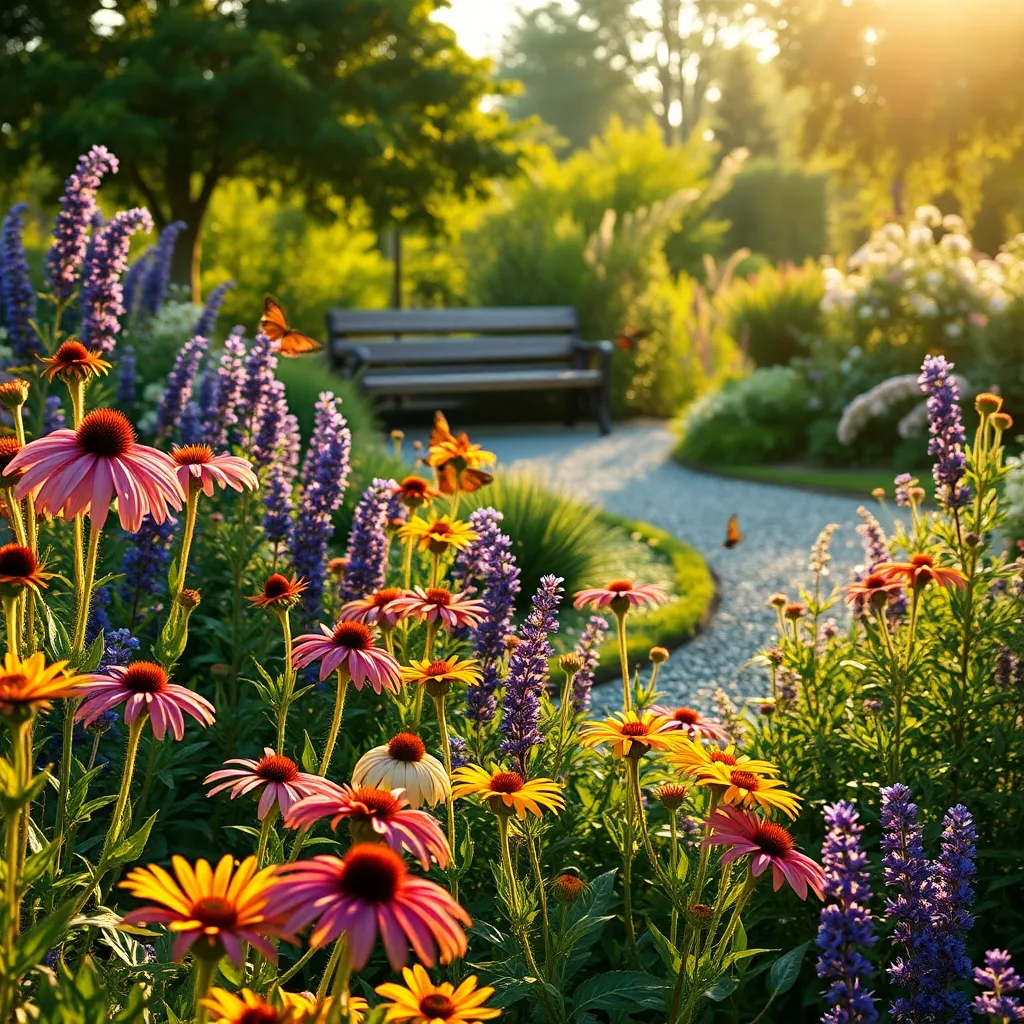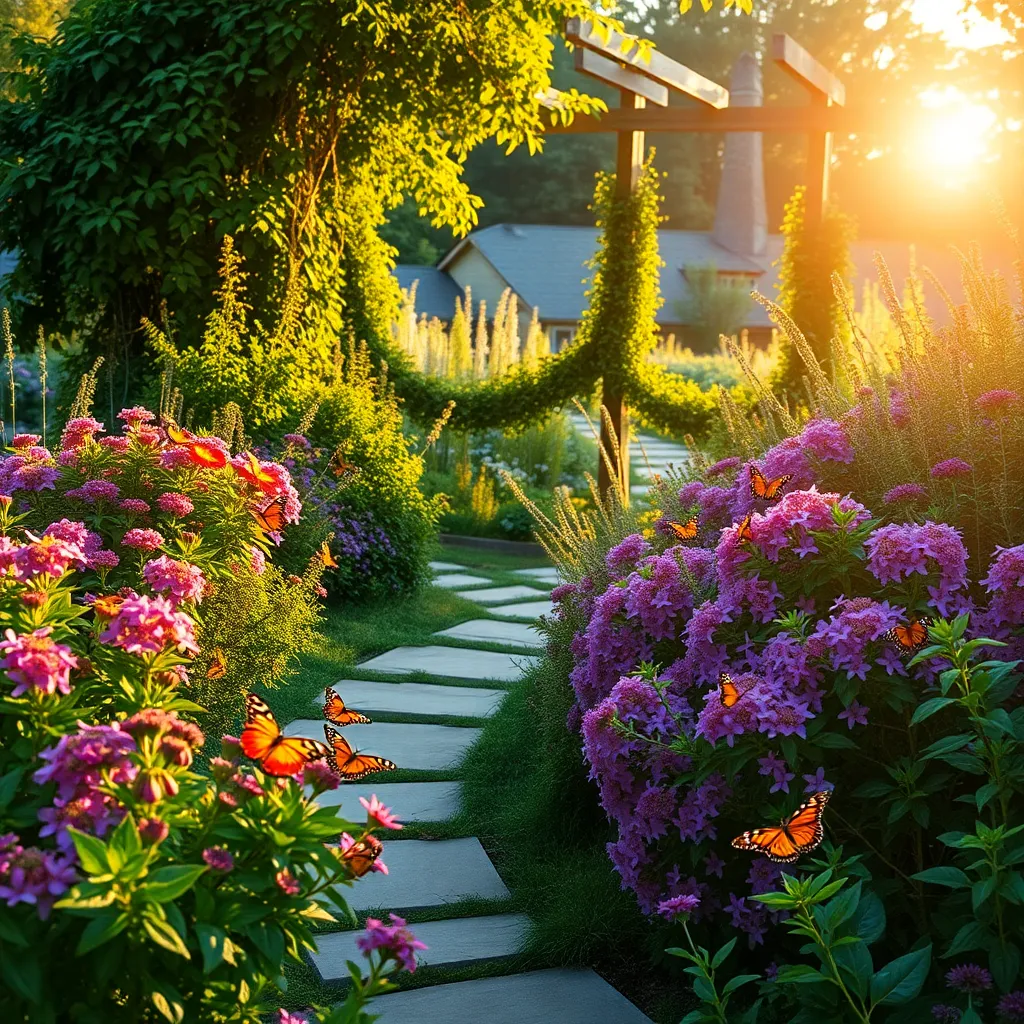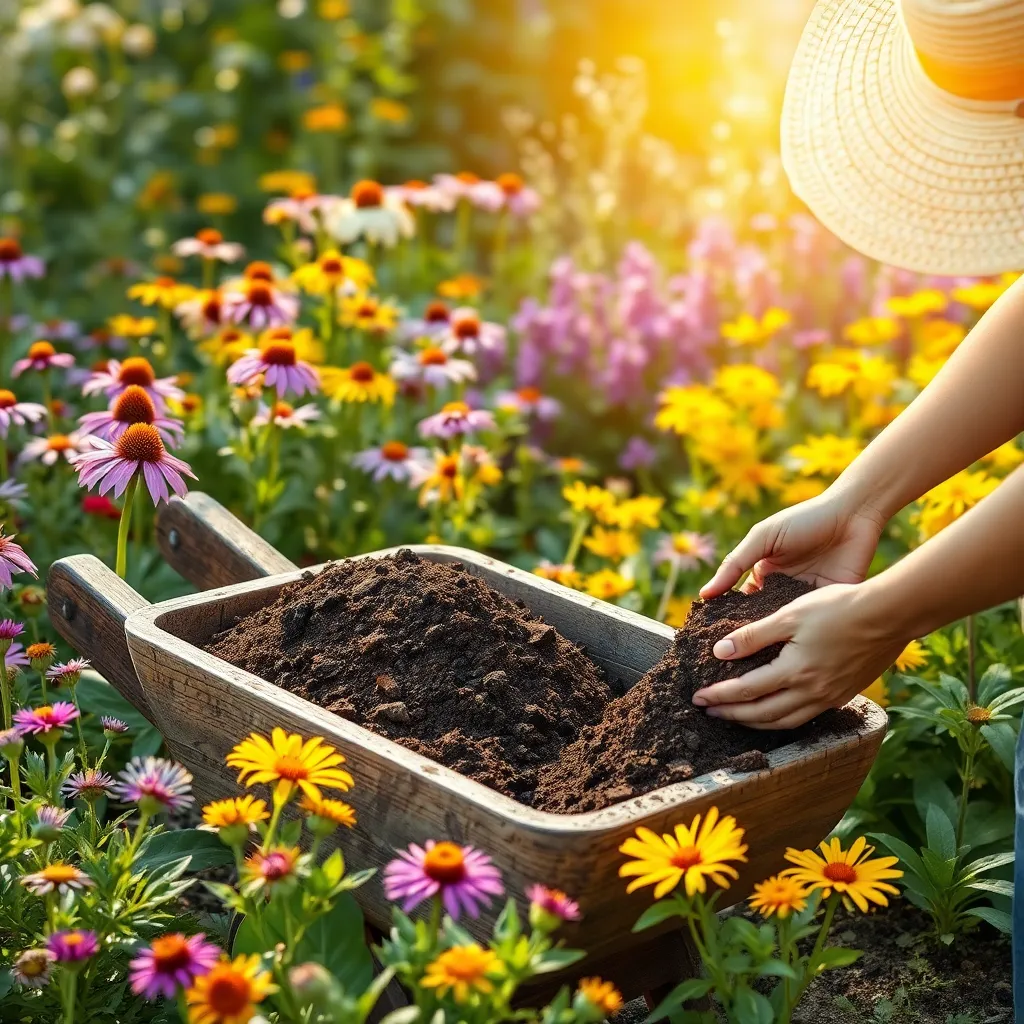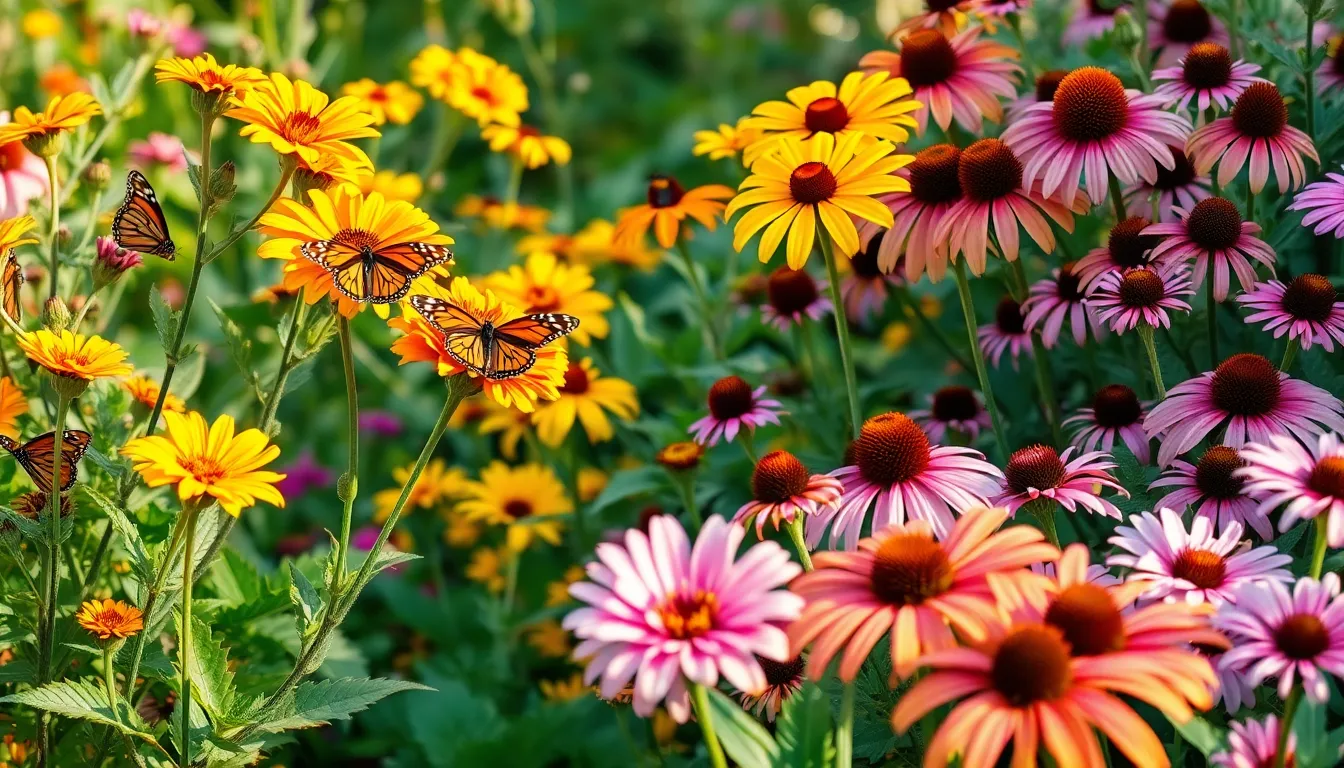Imagine a garden filled with the gentle flutter of vibrant butterfly wings, where every bloom seems to come alive with color and movement. Whether you’re a novice gardener just planting your first seeds or a seasoned horticulturist refining your sanctuary, creating a butterfly garden is a rewarding endeavor that promises both beauty and ecological benefits. In this guide, we’ll explore the best times to establish your butterfly haven, ensuring your efforts yield a thriving, fluttering paradise.
Diving into this delightful project, you’ll discover the secrets to selecting the perfect plants and timing their growth to attract a kaleidoscope of butterflies. With practical tips and expert insights, this guide is your key to transforming any outdoor space into a lively ecosystem. The joy of watching these delicate creatures dance among your flowers is matched only by the satisfaction of knowing you’ve contributed to their well-being. Let this guide be your companion as you embark on a journey to create a butterfly garden that will enchant and inspire you for many seasons to come.
Milkweed Plants (Essential Host for Monarchs)

Milkweed plants are crucial for attracting and supporting monarch butterflies, as they serve as both a food source and a breeding ground for these beautiful insects. To successfully grow milkweed, choose a sunny location and ensure the soil is well-drained, as these plants thrive in full sun and can tolerate dry conditions.
When planting milkweed, it’s essential to space the plants about 18 to 24 inches apart to allow for adequate growth and air circulation. Water the plants regularly until they are established, after which they become fairly drought-tolerant, making them a low-maintenance choice for your butterfly garden.
For beginners, starting with common milkweed (Asclepias syriaca) or swamp milkweed (Asclepias incarnata) is a good choice, as these varieties are hardy and adaptable. Advanced gardeners might explore tropical milkweed (Asclepias curassavica), which can add vibrant color to the garden but should be managed carefully to prevent disrupting monarch migration patterns in certain regions.
To encourage a robust milkweed population, consider collecting and sowing seeds in the fall, which allows natural stratification over the winter months. Alternatively, purchase young plants in the spring for quicker results, ensuring the soil remains moist during the initial growth period.
Nectar-Rich Perennials (Continuous Blooming)

Nectar-rich perennials are vital in a butterfly garden, attracting these beautiful pollinators with their vibrant blooms. To ensure continuous blooming, it’s essential to select a variety of species that flower at different times throughout the growing season.
Consider planting coneflowers (Echinacea), known for their drought tolerance and long-lasting blooms from early summer to fall. These hardy perennials thrive in full sun and well-drained soil, requiring minimal maintenance once established.
Avoid crowding by spacing coneflowers about 12 to 18 inches apart, which allows for proper air circulation and reduces the risk of disease. Additionally, deadheading spent flowers will encourage new blooms, extending the flowering period and providing more nectar for butterflies.
Another excellent choice is salvia, which offers spikes of vibrant flowers in shades of blue, purple, and red. Salvia prefers full sun and moderately fertile soil, and regular watering is essential during dry spells to keep the plants healthy and blooming.
For a more advanced gardening tip, consider incorporating companion planting techniques by pairing salvia with other perennials like yarrow or bee balm. This not only enhances the visual appeal of your garden but also creates a rich tapestry of nectar sources, ensuring butterflies have an enticing reason to visit your garden throughout the growing season.
Butterfly-Friendly Shrubs (Natural Shelter)

Creating a butterfly-friendly garden involves selecting the right shrubs that provide natural shelter. These shrubs not only offer protection from predators and harsh weather but also serve as larval host plants for caterpillars.
Consider planting spicebush (Lindera benzoin), which is a favorite among butterfly enthusiasts. This shrub thrives in moist, well-drained soil and can tolerate both full sun and partial shade, making it versatile for various garden layouts.
Another excellent choice is the buttonbush (Cephalanthus occidentalis), known for its globe-like clusters of white flowers. Ensure it receives ample water, as it prefers moist to wet soil conditions, and place it in an area with full sun to partial shade for optimal growth.
For those seeking a less common option, the New Jersey tea (Ceanothus americanus) offers dense foliage and small white flowers. This drought-tolerant shrub requires well-drained soil and full to partial sun, making it ideal for gardeners looking to conserve water.
Seasonal Planting Guide (Timing for Maximum Attraction)

To create a butterfly garden that blooms with vibrant life, timing your planting is crucial. Planting at the right time not only ensures healthy growth but also maximizes the attraction of butterflies to your garden.
Spring is an ideal time to plant many nectar-rich flowers that attract butterflies. These plants thrive in well-drained soil and benefit from a sunny spot, soaking up at least six hours of sunlight daily.
Summer planting can also be productive if you focus on heat-tolerant varieties. Consider using mulch to retain soil moisture and reduce the competition from weeds, ensuring your plants stay healthy and vibrant.
For those in warmer climates, fall planting offers a chance to establish perennials that will bloom the following season. Ensure these plants are watered deeply yet infrequently to encourage deep root growth, setting the stage for a robust garden next spring.
If you’re an advanced gardener, consider staggering your planting schedule to ensure continuous blooms. This approach creates a dynamic environment that can draw butterflies throughout multiple seasons.
Additionally, incorporating a variety of plant heights can enhance visual interest and cater to different butterfly species.
- Low-growing plants like lantanas work well at the front of your garden.
- Mid-height plants such as coneflowers can serve as a bridge to taller varieties.
- Finally, tall plants like butterfly bushes can provide both nectar and shelter.
Regularly deadheading spent flowers can prolong blooming periods, which keeps butterflies visiting your garden longer. This simple act encourages plants to produce more flowers, ensuring a steady supply of nectar.
Organic Fertilizers (Chemical-Free Growth)

Organic fertilizers are a fantastic choice for cultivating a butterfly garden because they enrich the soil naturally. They provide essential nutrients that promote strong plant growth without the use of synthetic chemicals.
Consider using compost, which is easy to make at home and incredibly beneficial for your garden. Not only does compost improve soil structure, but it also boosts the microbial activity that is crucial for healthy plant development.
For those looking to add a nutrient boost, try incorporating aged manure into your garden beds. Aged manure is rich in nitrogen, phosphorus, and potassium, which are key nutrients for flowering plants that attract butterflies.
Another excellent option is fish emulsion, a liquid fertilizer that is particularly useful for rapid nutrient uptake. Dilute the fish emulsion with water and apply it directly to the soil around your plants every few weeks for optimal results.
For advanced gardeners, experimenting with green manure, such as clover or rye, can improve soil fertility and structure over time. These plants are grown and then turned into the soil, adding organic matter and nutrients back into the garden ecosystem.
Conclusion: Growing Success with These Plants
In exploring the best time to create a butterfly garden, we discovered five key concepts that enrich both our natural spaces and relationships. First, timing is everything; understanding the optimal moments to plant seeds parallels recognizing pivotal moments to nurture your relationship. Second, diversity in plants attracts a variety of butterflies, just as embracing diversity in experiences strengthens bonds. Third, patience is crucial—gardens and relationships alike flourish when given time to grow. Fourth, consistency in care ensures sustainability, reminding us of the importance of regular efforts to maintain healthy connections. Lastly, adaptability to change underlines the need to evolve alongside our partners.
To take immediate action, consider setting aside time this week to discuss with your partner or loved ones how you can integrate these principles into your relationship. Reflect on what ‘planting seeds’ means to you both and start implementing small, consistent actions.
Don’t forget to save or bookmark this article as a handy guide for nurturing your relationship garden. As you incorporate these insights, look forward to a blossoming partnership where love and understanding grow resiliently. Embrace these steps with confidence, and watch your relationships transform with the beauty and vibrancy of a well-tended garden.


